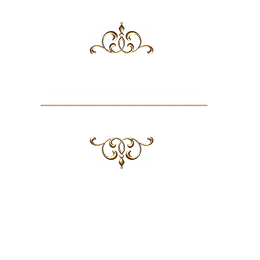CONTACTS
+48883888495 ( whatsapp )
Warsaw Poland
+44 7367 899 788 (Telegram)
United Kingdom, London
+375 44 7484847 (Viber)
Belarus, Minsk
France, Nice, Paris
Email: antiinterior888@gmail.com
antinteriordevelopment@ Gmail.com
Websites: antinterior.com
antinteriordevelopment.com
Opening hours: 10:00 - 19:00

Content Oriented Web
Make great presentations, longreads, and landing pages, as well as photo stories, blogs, lookbooks, and all other kinds of content oriented projects.
Rococo style in the interior.
An article from the Book "Interior Styles with Tatyana Antonchenko" is a large encyclopedia of interior and architectural styles.
Leave your Email
Please leave your details to continue reading.
We do not send unwanted emails
You agree to the Terms of use of your personal data and с Privacy Policy
You agree to the Terms of use of your personal data and с Privacy Policy
Mid 18th century
Very often the Rococo style is confused with the Baroque. And there is an explanation for this.
Rococo is also known as the late baroque style, in contrast to which, rococo uses completely different motifs. Rococo is a very bright and rich style. But besides all the intricate decorative details, Rococo is also quite elegant.
The Rococo style reached its height of glory from 1700 to 1780 in Western Europe and found expression in art and music. In French, the word rococo means "decoration of shells and stones", which is very appropriate for this style. Rococo asymmetry draws its inspiration from nature using curved lines. Square shapes gave way to sinuous shapes and lines.
It is safe to say that if baroque is the style of kings, then rococo is undoubtedly the style of favorites - boudoir and erotic, cozy and elegant.
Remember, I wrote in the description of the Baroque style about Louis XIV - the king - of the Sun, who owns the Palace of Versailles. In addition to the Palace of Versailles, two more castles were built on its territory, differing in size. The first, the Grand Trianon, was built for outdoor recreation in the classical style, and the second Petit Trianon in the rococo style belonged to the wife of Louis XIV, then Madame de Pompadour, the mistress of Louis XV, and then becomes the favorite place of Queen Marie Antoinette.
Be sure to visit Versailles and you will be introduced to two of the most luxurious and opulent interior styles in history.
The main principles of this style in art were the escape from life into the world of fantasy, games, mythical plots and erotic situations. A grandiose, whimsical ornamental rhythm dominates, romanticized oriental motifs. The interiors are elegant, decorative and light.
The French Rococo style was known for colors such as yellow, pink, gold, blue, cream and ivory. The combination of pastel and golden tones is a characteristic feature of this style. Somewhat faded, iridescent color.
Carved and stucco patterns, torn cartouches, cupid masks, reliefs, picturesque panels, erotic and pastoral silhouettes, asymmetric composition, exquisite decoration inspired by Chinese art. Mirrors in gold openwork frames, tapestries, porcelain figurines, Chinese lacquer boxes, busts. Expensive fabrics: satin, silk, fabric flowers.
Rococo style bathroom is very romantic and spacious. You can use pastel, gilded or just white elements, stucco.
Faucets preferably gold or bronze. Walls - tiles with floral or pastoral patterns. Ideal bathtub with metal legs and elements of carving, gilding.
The more luxurious, artsy, carved sanitary ware and furniture will be installed in the bathroom, the more readable the rococo style will be.
For the Rococo style, furniture with various gilding, painting, carved furniture is perfect. A console will look good, preferably on high, slightly curved legs; Additionally, it can be equipped with drawers. The console also functions as a ladies dressing table.
Antique chests of drawers with gilded or copper fittings will also look good.
The decorative art of Rococo belongs to the highest achievements of 18th century art in terms of sophistication, the beauty of asymmetrical compositions, the spirit of intimacy, comfort and personal decoration.
The whole atmosphere and energy of this style is conveyed in the bibliographic film "Marie Antoinette" by Sofia Coppola about the life of the Queen of France, Marie Antoinette, filmed in 2006. The film was filmed at the Palace of Versailles.
Enjoy watching and creating in the Rococo style!
Continuation of the review of interior styles follows ...
Certificate of Publication No. 34068
When reprinting and quoting an article, the author's indication and an active link to the page are required!
Thanks to me and the sources for the information
Sincerely yours, Tatyana Antonchenko
When reprinting and quoting an article, the author's indication and an active link to the page are required!
Thanks to me and the sources for the information
Sincerely yours, Tatyana Antonchenko



